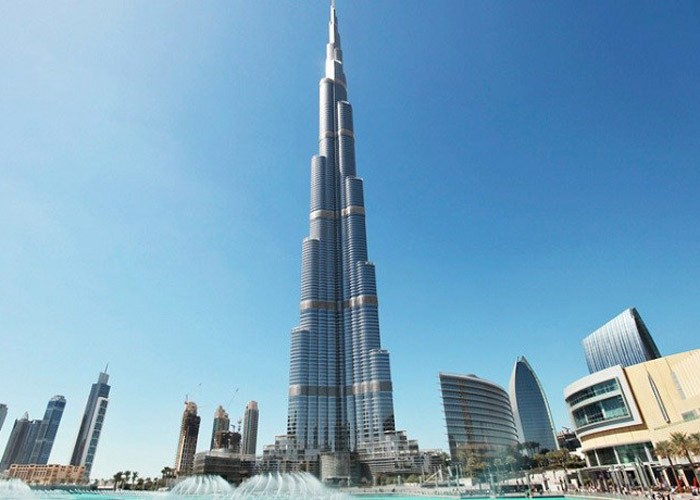Dubai: A crystal city in the sand or an architectural zoo?
Last month, I discussed how the architecture of Stockholm has evolved consistently and organically over many decades and centuries. With its rapid urban transformation, Dubai is the opposite.
In March, Sheikh Mohammed bin Rashid Al Maktoum released a new book titled ‘Reflections on Happiness and Positivity’, in which he sets out his vision for development within the region. His dedication to putting Dubai on the prosperous powerhouse ‘map’ has been upheld by generations of the matriarchal family. As a result, Dubai now has more towers over 200m than any other city in the world, 73 in total.
Visitors are guaranteed to be in awe of the impressive skyline, and we can learn a lot about Dubai by looking at the shift in location and, importantly, the height of its towers.
1979: Dubai World Trade Centre – Sheikh Zayed Road (158m)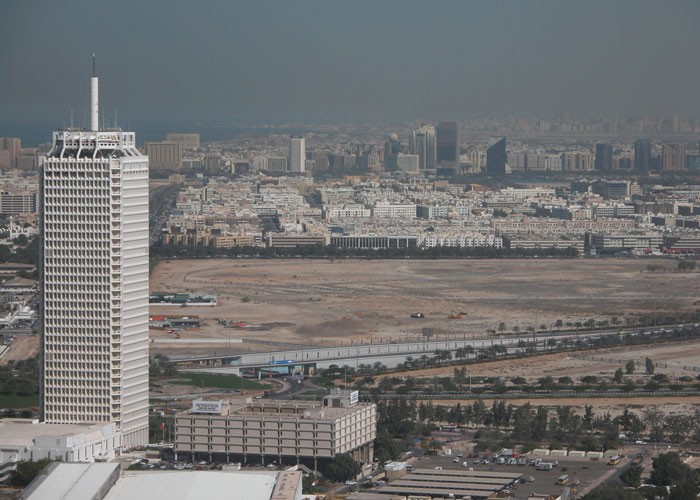 Over the years, Sheikh Zayed Road has become synonymous with the decadence of skyscrapers; the World Trade Centre is a bastion of Dubai’s iconic, modern architectural landscape and was among the first of the city’s towers to really make its mark. The building’s complex facade references arabesque forms but isn’t pastiche. Created by John R Harris and his team of architects, the intricate exterior has stood the test of time, exuding elegance and calm while other glass shapes crowd around it.
Over the years, Sheikh Zayed Road has become synonymous with the decadence of skyscrapers; the World Trade Centre is a bastion of Dubai’s iconic, modern architectural landscape and was among the first of the city’s towers to really make its mark. The building’s complex facade references arabesque forms but isn’t pastiche. Created by John R Harris and his team of architects, the intricate exterior has stood the test of time, exuding elegance and calm while other glass shapes crowd around it.
1999: Burj al Arab – Jumeirah Street (321m)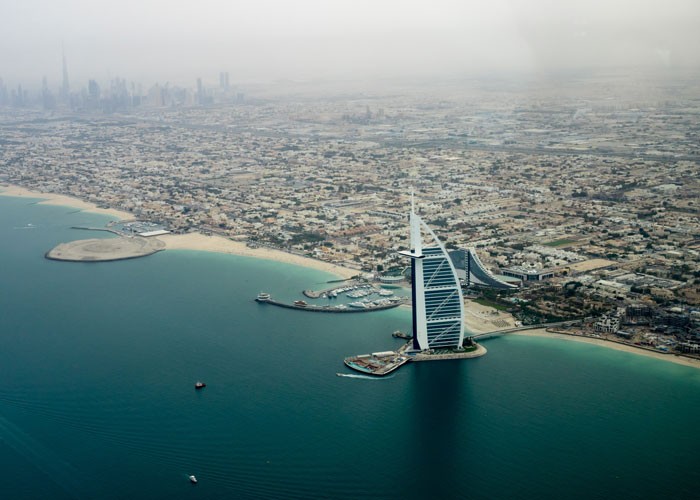 Tom Wright at WKK Architects designed the world’s most luxurious hotel which, it is fair to say, is the first building that truly made Dubai a world tourist destination. The marina hotel adorns 7 stars, sits on an island lined with gold and marble, but still manages to capture the elegance and feel of the Arabian Peninsula, as well as the romance of the surrounding desert oasis.
Tom Wright at WKK Architects designed the world’s most luxurious hotel which, it is fair to say, is the first building that truly made Dubai a world tourist destination. The marina hotel adorns 7 stars, sits on an island lined with gold and marble, but still manages to capture the elegance and feel of the Arabian Peninsula, as well as the romance of the surrounding desert oasis.
1996: Emirates towers – Sheikh Zayed Road (309m and 355m)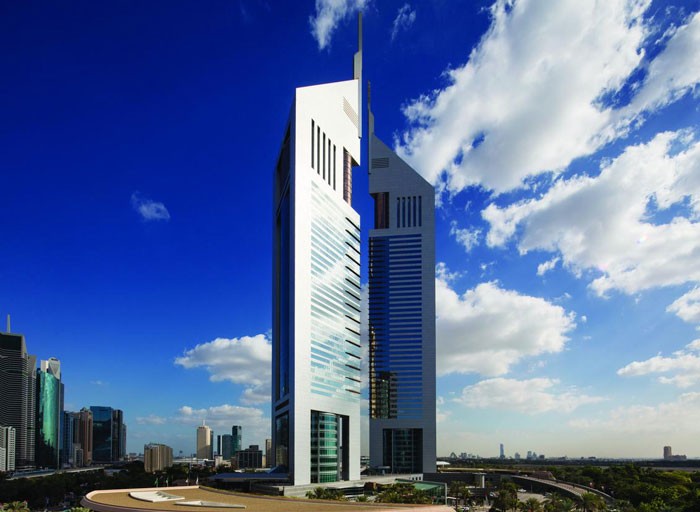 The most memorable non-identical ‘twins’ on Sheikh Zayed road. The erection of the hotel and office towers marked the transition of the country from tourist destination to global business destination. This was the first hotel I stayed in on business in Dubai, and while they’re both grand, expensive and over the top, in many respects, it has to be said that the pair of buildings are elegant, timeless and compelling.
The most memorable non-identical ‘twins’ on Sheikh Zayed road. The erection of the hotel and office towers marked the transition of the country from tourist destination to global business destination. This was the first hotel I stayed in on business in Dubai, and while they’re both grand, expensive and over the top, in many respects, it has to be said that the pair of buildings are elegant, timeless and compelling.
2010: Burj Khalifa – Sheikh Mohammed bin Rashid Blvd (828m)
Eight years after completion, this downtown creation is still the world’s tallest and, by far, the best looking super tall tower in the world. Looking up at what can only be described as a truly memorable building, the tower is a wonder for the eyes and causes you to ponder how something of this size can stand up on the sand.
The brilliant structural solution was a collaboration between the architectural and engineering teams within Skidmore, Owings & Merrill. Led by Adrian Smith and William F. Baker, the final tower set downtown Dubai apart from previous leading districts and established the surrounding area as the new ‘centre’ of the city. While other urban development projects floundered in the aftermath of the global financial crisis, the Burj Khalifa flourished.
Expected in 2020: Calatrava – Dubai Creek Tower (928m)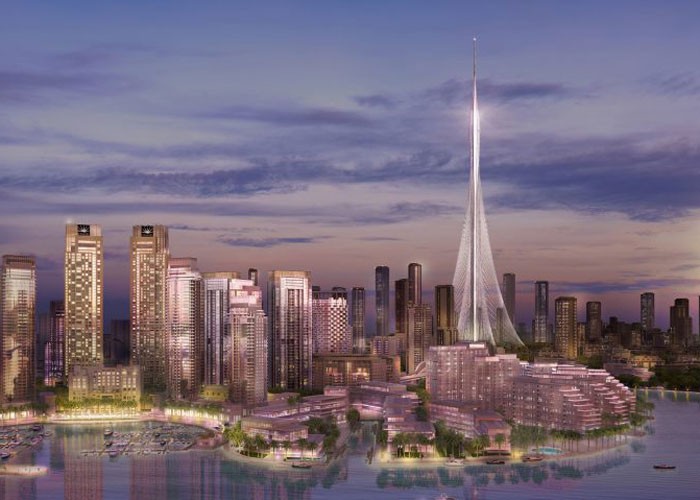 Where next? Of course, make an even taller building which is purely about performance rather than real estate – and get the master engineer/sculptor Calatrava to design it for good measure. The developer, Emaar, hopes is that it will create another new commercial district for Dubai, and claims that the Dubai Creek Tower will be a ‘monument to the world and an icon of the 21st Century’. This methodology worked for the Burj Khalifa; will the same be said for Calatrava?
Where next? Of course, make an even taller building which is purely about performance rather than real estate – and get the master engineer/sculptor Calatrava to design it for good measure. The developer, Emaar, hopes is that it will create another new commercial district for Dubai, and claims that the Dubai Creek Tower will be a ‘monument to the world and an icon of the 21st Century’. This methodology worked for the Burj Khalifa; will the same be said for Calatrava?
I have been visiting Dubai for more than ten years and it has, most certainly, transformed over this period. The Maktoum Royal Family stayed true to their big, bold vision for Dubai – and succeeded.
Dubai’s biggest strength is its single-mindedness and unapologetic nature. Financial power has also shifted from West to East, meaning Dubai is perfectly-suited and well positioned to give the newly wealthy their dream; a modern-day crystal city in the sand.
I have a strong fondness for its boldness, which sits in contrast to the common-sense approach of the common northern European city. The sight of the Dubai skyline ignites a counter motivation within designers – a yin to a yang, an extravagant to the sensible. Dubai is also smart, having embraced new technologies and environmental responsibility.
Being steadfast in their singular vision for urban development, they may well catch up and overtake the sensible slowness of the West. I’m excited to see what they can do over the next ten years.
Contact Woods Bagot





